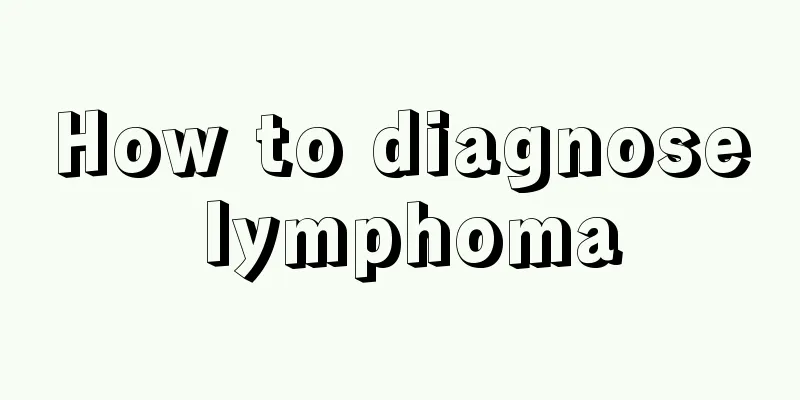What causes purple eczema

|
The symptoms of many diseases are often reflected on the human skin. For example, purpura reflects the deficiency of spleen and blood in the heart and spleen, or it is a manifestation of kidney deficiency, which manifests itself on the surface of the body as bright red or dark red papules on the skin. When this symptom occurs, it can mostly be treated with traditional Chinese medicine or massage. But what causes purpura? How is this disease diagnosed? 1. Causes Purpura is mainly a disease in the blood and can be divided into deficiency and excess. The external cause is the exogenous wind-heat evil, which brings dampness, heat and poison into the blood on the skin surface, forcing the blood to flow abnormally and overflow into the skin pores, mainly manifesting as a positive symptom. The internal cause is insufficient qi and blood in the heart and spleen, deficiency of kidney yin, ascending of virtual fire, and failure of blood to return to the meridians, with deficiency syndrome being the main symptom. 2. Pathogenesis Because children's yin and yang are immature, their qi and blood are not sufficient, and their defenses against external diseases are not strong, they are affected by external pathogens of the season, and the six qi are all transformed into fire and accumulated between their skin, fur and muscles. The evil wind-heat fights against the qi and blood, the heat damages the blood vessels, forces the blood to flow abnormally, overflows from the vessels, seeps under the skin, and causes purpura. If the evil is severe, it can also damage the yin meridians, causing blood in the stool, blood in the urine, etc. If blood heat runs rampant and stagnates in the intestinal tract, it can cause severe abdominal pain. If dampness is retained in the joints, local swelling and pain will occur, and flexion and extension will be difficult. If a child's congenital endowment is insufficient, or the disease prolongs for a long time, it will consume Qi and damage Yin, which may lead to Qi deficiency and Yin damage, and the condition may turn from real to virtual, or even a mixture of real and virtual. If Qi is deficient, it will have no power to control blood, so blood will not flow along the normal path and will overflow outside the vessels. If Yin is deficient and fire is inflamed, blood will move with the fire and seep outside the vessels, both of which can cause recurrent attacks of purpura. 3. Clinical Diagnosis Diagnostic points The disease usually develops rapidly, with bleeding as its main symptom. In addition to purpura on the skin and mucous membranes, it is often accompanied by epistaxis, bleeding from the teeth, hematemesis, blood in the stool, and hematuria. If the bleeding is severe, symptoms of blood deficiency such as pale complexion may occur, and even collapse may occur. 4. Differential Diagnosis Care should be taken to differentiate whether this disease is allergic purpura or thrombocytopenic purpura. 1. Allergic purpura may be preceded by upper respiratory tract infection or taking certain medications, foods, and other triggers. Purpura is often seen on the extensor side of the lower limbs, buttocks, and around the joints. It is bright red to dark red papules, erythema or urticaria that are raised above the skin. They vary in size, are mostly symmetrical, appear in batches, and do not fade when pressed. It may be accompanied by gastrointestinal symptoms such as abdominal pain, vomiting, bloody stools, migratory swelling and pain in large joints, hematuria, proteinuria, etc. Platelet count, bleeding and clotting time, and clot retraction time were all normal. Attention should be paid to regular urine routine examinations, as microscopic hematuria and proteinuria are often found. 2. Thrombocytopenic purpura may cause petechiae and ecchymoses on the skin and mucous membranes. The petechiae are mostly needle-sized, usually not protruding above the skin surface, and are mostly asymmetrical. They can be found all over the body, but are more common on the limbs, head and face. It may be accompanied by epistaxis, bleeding from the teeth, hematuria, bloody stool, etc. In severe cases, intracranial hemorrhage may occur. The platelet count is significantly reduced, the acute type is generally lower than 20 times 109 times/L, and the chronic type is generally between 30x109 times/L-80X109 times/L. Bleeding time is prolonged, blood clot retraction is poor, and the clot test is positive. |
<<: What are the effects of staying up late on high blood pressure
>>: Why do I burp when I cough?
Recommend
What to eat to prevent uterine cancer
When treating uterine cancer, a proper diet becom...
Home termite control methods
Termites are also known as white grasshoppers, bi...
Is it better to take a CT scan or an MRI for back pain?
Low back pain is a type of waist disease that tor...
Watching TV for a long time is most likely to cause 9 diseases
People who watch TV for more than 3 hours a day m...
How to cure melanoma
Malignant melanoma is a highly malignant tumor or...
How to recover quickly from a sprained rib
As the saying goes, a broken bone requires at lea...
How to do health psychology
The so-called health psychology combines the know...
How to treat gastric distension
How to treat gastric epigastric disease? This is ...
Symptoms of gastrointestinal disorder
Everyone should distinguish that the symptoms of ...
How to calculate sugar content
Most of the food that humans eat in life contains...
Do I need to be on an empty stomach for a pre-marital checkup?
Premarital examination is an important measure to...
Which organ is not healthy if acne appears on the temples?
Acne is not something that everyone has experienc...
Is it normal to have small granulations under the tongue?
The tongue is a very important organ in the human...
How is gingival osteosarcoma formed
Gingival osteosarcoma is a rare malignant tumor c...
Remove forehead wrinkles, these tips can help you
As we age, wrinkles will gradually appear on our ...









